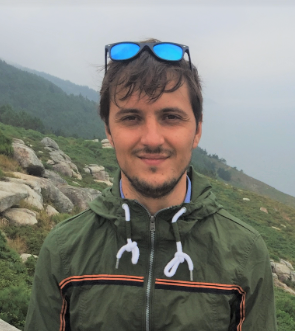Blog 2022#
🗓️ November, 2022#
In November I had the pleasure to meet in Madrid with M. Garcia, Investigadora senior (Maria Zambrano) at CEIGRAM (Centro de Estudios e Investigación para la Gestión de Riesgos Agrarios y Medioambientales). It was nice to see how much connections exist between her (teledetection) and my MSCA work (environemental geophysics). I hope for the best for a future collaboration!
Meantime I thank her for invited me to give a seminar and I’m really grateful to all people who attented. For those who are interested my slides are accessible online at: MARY, Benjamin (2022): The geophysical toolbox applied to the root zone. figshare. Presentation: https://doi.org/10.6084/m9.figshare.2…
Check this out!
M. Garcia’s great talk “Teledetección óptica y térmica en ecofisiología vegetal” - 24/06/2022
🗓️ August, 2022#
Nice reading about Machine learning and Geosciences#
I wanted to catch up a little bit and read about possible applications of Machine Learning for Geosciences. The most difficult was to find an entry point among the huge litterature and courses available. I started with the introduction to deep learning with the UC Berkeley open course and listened to two great talks from at Software Underground.
Self supervised noise suppression of seismic data by C. Birnie and S. Liu;
Geospatial ML challenges by T. Ostersen and T. Carmichael.
My position
I feel like the spectra of ML for geophysical is huge but I’m still to unmature to start a project from scratch! Looking for opportunities to contribute.
Processing metadata Open-source Tension-disk Infiltrometer Meta-Database with ML could be a great start isnt it?
🗓️ July, 2022#
First time as a reviewer for the Journal of Open Source Software#
I was asked to review for the JOSS! Not only I learned how to publish quality research software but also what Tessellation is i.e “discretization of space into subspaces without overlaps and gaps”.
Find out more in the tesspy Github repo.

🗓️ January, 2022#
Starting the new year with the Ramón y Cajal application#
Applying to grants is a fantastic way to learn about important our peers that made history of Science.
In 2019, I was awarded a Maria Skłodowska Curie fellowship for the Growing project. As a French and because I studied my Master degree to the University Pierre et Marie Curie (UPMC), I obviously knew her extraordinary trajectory work and life.
One reading recommandation to get a passionate and deep taste of her life is “La ridícula idea de no volver a verte” de Rosa Montero (ISBN: 9788432222719).

Fig. 16 Ramón y Cajal portrait. Credit to https://commons.wikimedia.org/.#
In 2022, I sent an application to the Ramón y Cajal. Entonces Ramón y Cajal quien eres? Make no mistake, it’s one unique person (at first I was confused due to the ‘y’) who certainly accomplished the work of two… Santiago Ramón y Cajal (1852-1934), was a Spanish physician and scientific and is considered as the father of neuroscience and once an aspiring artist.

Fig. 17 Nerve cells in the brain drawing by RyC. © wikipedia commons#
Unfortunately I can’t comment on figure Fig. 17, I’m just admiring the patience he had to accomplish it. Read more in the scientific american blog.
Edit
In the meantime I received the response and ranked >100 which if far from succesfull.
“Sin embargo, su producción científica es relativamente limitada”
“La experiencia en la supervisión de estudiantes es relativamente limitada”.
Thanks all who help me to prepare the application (V. Hevia Martín). Ramón y Cajal See you next year!
